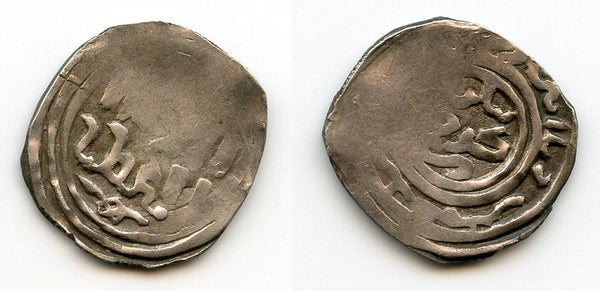
Tengri Kuchundur (Mongol for "by the power of God" or "With the power of the eternal god"), Ogedei's S-shaped tamgha below, in the circular margins date written out (not readable) // Imil above Shahada, knotted decoration below, all within a double (?) circle. 19mm, 2.38 grams. Cf. Zeno 144058.
Rare, poorly studied and not yet properly published. The earliest date that's been read is 635 AH (1237 CE), but the sequence of dates and whether they were frozen (like "644" on the later type) is unknown. These are nearly always poorly struck, with large flat areas.
Ögedei Khan (c. 1186–1241) was the third son of Genghis Khan and his designated successor, ruling as Great Khan of the Mongol Empire from 1229 to 1241. Chosen by his father for his balanced temperament and administrative skill, Ögedei continued the empire’s rapid expansion, completing the conquest of the Jin dynasty in northern China, subjugating the Western Xia, and launching successful campaigns into Korea, the Middle East, and Eastern Europe. Under his leadership, Mongol armies reached as far as Hungary and Poland. Ögedei strengthened the empire’s administrative structure, established a permanent capital at Karakorum, and promoted trade and communication across Eurasia. Known for his generosity and pragmatism, he nevertheless indulged heavily in drinking, a habit that contributed to his death in 1241, which in turn halted the Mongol advance into Europe.
